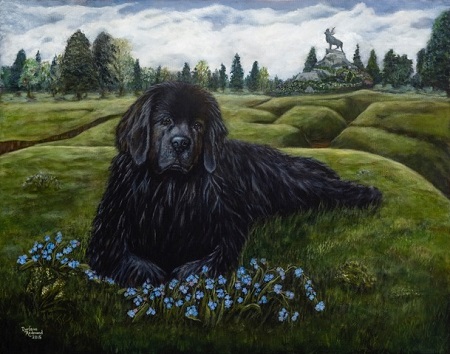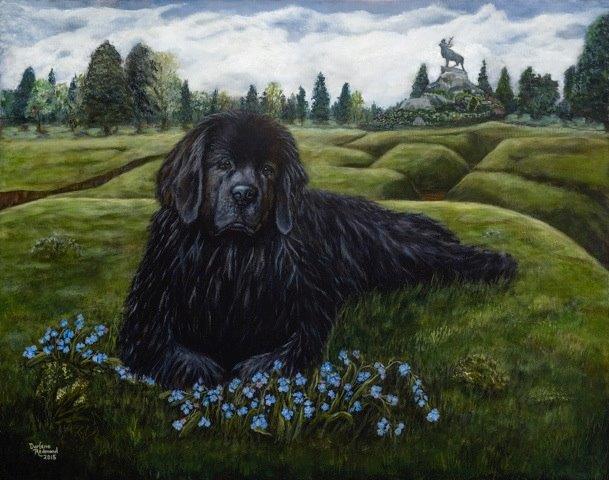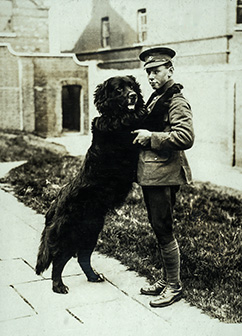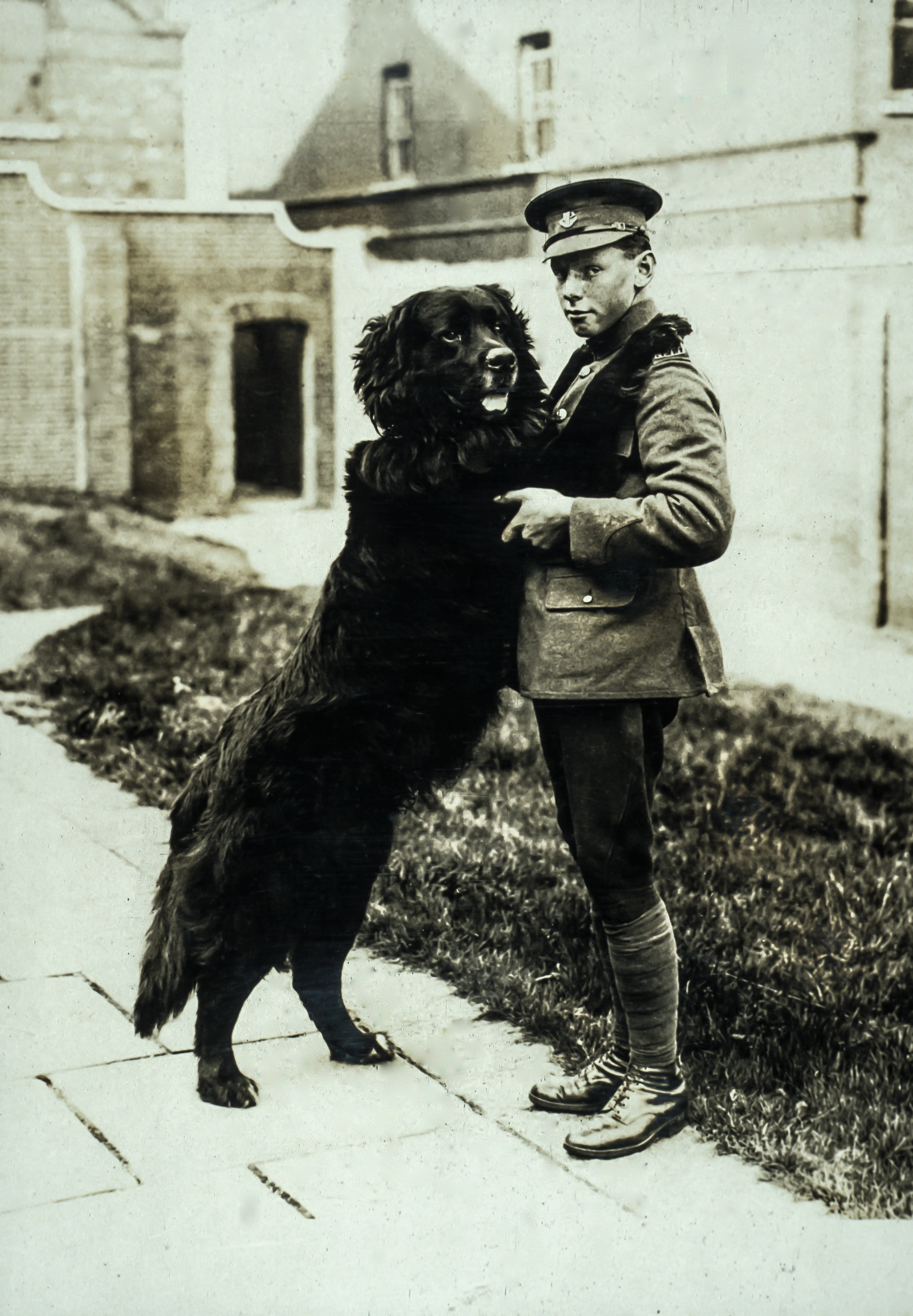Sable Chief – A comforting mascot – Remembering Beaumont-Hamel and the battle of the Somme
This publication is available upon request in alternate formats.
PDF Version
On March 31, 1949, the Island of Newfoundland officially became a Canadian province. However during the time of the First World War, 1914-1918, Newfoundland was still a dominion of Great Britain. When Britain declared war on Germany in 1914, Newfoundland was automatically at war as well. More than 12,000 Newfoundlanders rushed to enlist.
They came to be known as the “Blue Puttees” because of the colour of the wool fabric on their uniform that protected their legs.
In 1916, the Newfoundlanders went to France to fight at the Battle of the Somme to help stop the Germans from invading further into France.
The attack by the Newfoundland Regiment on the first morning of the Battle, on July 1st near the village of Beaumont-Hamel, was supposed to take the Germans by surprise. However, the Germans had been alerted about it, and they were ready and prepared. Unfortunately, as the Newfoundlanders left their trench to go over the top and advance toward the enemy for their attack, they walked into a hail of machine gun fire.
The losses were huge. Some 800 Newfoundlanders went into battle that morning and sadly, more than 700 of these brave soldiers would be killed, wounded or go missing in the fighting.
Those who survived the Battle at Beaumont-Hamel had to stay in France to continue fighting. This was hard because they were sad that they had watched many of their friends die on July 1st. It was difficult for them to keep their spirits up. Some Canadian soldiers noticed this, and offered the Newfoundland Regiment a canine friend. He was a very large Newfoundland dog named Sable Chief. Sable Chief marched with the regimental band, and visited wounded troops. Being 150 pounds or more, his huge size attracted a lot of attention! Not only did he keep in step with the marching but it’s said that he would stand at the playing of the Newfoundland anthem, and stayed at attention until it finished. Sable Chief really boosted the spirit of the regiment! It’s comforting to know that pets and mascots can help humans feel better about unpleasant situations, just like Sable Chief did for the Newfoundlanders during the First World War.
The families on the home front in Newfoundland who lost sons, fathers and friends on that tragic day, felt a great deal of grief and sadness. To remind them of their loved ones who died, they decided that every year July 1st would be called Memorial Day (similar to Remembrance Day), and they would wear little blue flowers called “forget-me-nots” on their shirts to remember. The Government of Newfoundland also built five monuments in the shape of a caribou in France and Belgium, where the Newfoundland Regiment fought, and one in Newfoundland. The largest of these monuments is on a mound of rocks and plants native to Newfoundland at Beaumont-Hamel park in France. They chose the form of the caribou because it is an animal native and familiar to all in Newfoundland and Labrador, which also was the emblem used in the Newfoundland Regiment cap badge. These symbols of remembrance help the people of Newfoundland and Labrador keep connected with their past.
- Date modified:



